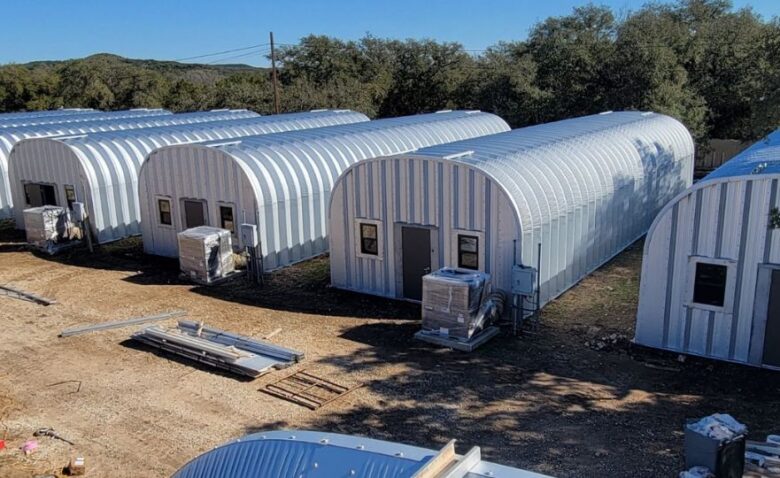
What Is Commander (EDH) Format?
Commander, also known as EDH (Elder Dragon Highlander), is a multiplayer format in Magic: The Gathering (MTG) that offers a unique and engaging way to play the game. In Commander, players use a deck of exactly 100 cards, with one card being designated as the “commander.” This commander is a legendary creature or planeswalker that leads the deck and plays a central role in the game. Unlike other formats, Commander decks encourage creativity, strategy, and personalization, allowing players to build around a commander, choose a theme, and create synergies with their cards.
One of the defining features of Commander is the “highlander” rule, meaning that besides basic lands, you can only include one copy of any card in your deck. This rule ensures that decks are diverse and unique, requiring players to think strategically about their card choices.
Why Build a Commander Deck?
Building a Commander deck can be one of the most satisfying and rewarding experiences for Magic: The Gathering players. Whether you’re a new player or an experienced one, Commander offers a chance to express creativity and personalize your deck in a way that suits your playstyle. With a 100-card deck and nearly endless possibilities, Commander gives you the opportunity to build a deck that reflects your personality and approach to gameplay.
Commander is also a highly social format, ideal for multiplayer games. It emphasizes fun, interaction, and shared experiences over just winning. The format’s structure encourages cooperation, as players face off against each other in dynamic games that require both strategic planning and creative problem-solving.
Understanding the Singleton Rule
The Singleton Rule is one of the fundamental differences in Commander. It means that players can only include one copy of each card in their deck (except for basic lands). This rule pushes players to think outside the box, encouraging them to diversify their deck choices rather than relying on powerful staples that might be found in every deck.
For example, if you’re building a Commander deck in red, you’ll need to be inventive in selecting spells and creatures, making sure you avoid duplicates. This diversity fosters unique gameplay and allows you to encounter new and unexpected card interactions during a game.
Step-by-Step Guide to Building Your Commander Deck
Step 1 – Choose Your Commander
The first step in building your Commander deck is choosing your commander. This legendary creature or planeswalker is the focal point of your deck, determining your strategy, the deck’s color identity, and the overall theme. Your commander’s color identity is defined by the colors in its casting cost and abilities, so choosing a commander that aligns with your preferred playstyle is essential.
For example, if you enjoy aggressive play, select a commander that encourages dealing damage or generating an army of creatures. If you prefer more control, choose a commander with abilities that provide board wipes or counterspells. Your choice will shape the rest of your deck-building process.
Step 2 – Define Your Deck’s Strategy
Once you’ve selected your commander, it’s time to define your deck’s strategy. Ask yourself, “What’s my goal in the game?” Do you want to swarm your opponents with creatures? Or do you plan to set up a powerful combo to win in a single turn?
Here are a few common Commander strategies:
- Aggro (Aggressive): Focused on quickly dealing damage through creatures.
- Control: A defensive strategy aimed at slowing down opponents and stopping their key plays.
- Combo: Built around creating a win condition by assembling specific cards in a particular order.
- Ramp: Focused on generating mana to cast powerful spells or creatures quickly.
- Tribal: Centers on a specific creature type, such as elves, vampires, or dragons.
By defining your strategy early, you’ll be able to choose cards that support your approach and strengthen your deck’s synergy.
Step 3 – Select Your Colors
With your commander and strategy in place, it’s time to choose your deck’s colors. Each color in Magic has its strengths, weaknesses, and specific themes:
- White: Known for defensive capabilities, healing, and creature synergies.
- Blue: Mastery of counterspells, card draw, and control.
- Black: Focuses on graveyard interaction, creature removal, and sacrifice mechanics.
- Red: Deals damage and encourages fast-paced gameplay.
- Green: Offers ramp, large creatures, and natural synergies.
When choosing your deck’s colors, consider how they complement your commander’s abilities and your overall strategy. Multicolor decks allow for greater flexibility, though they may require more complex mana bases.
Step 4 – Build Your Mana Base
Your mana base is a crucial part of your deck, determining how reliably you can cast your spells and activate your commander’s abilities. Most Commander decks should include around 38-40 lands, though the exact number will depend on your deck’s mana curve (the average cost of your cards).
Dual lands, fetch lands, and mana rocks (such as Signets or mana stones) are essential for creating a consistent mana base. A well-constructed mana base ensures that you won’t get stuck with the wrong colors of mana, improving your deck’s overall performance.
Step 5 – Add Ramp and Mana Acceleration
Ramp cards are essential for any Commander deck, as they help you produce more mana than you would with lands alone. Ramp allows you to cast more powerful spells and activate abilities faster, which is especially important in a 100-card deck.
Examples of ramp include mana rocks (like Sol Ring or Chromatic Lantern) and spells like Cultivate or Kodama’s Reach, which allow you to search your deck for lands. These ramp cards give you the ability to play your big spells faster, ensuring that you don’t get stuck with fewer resources.
Step 6 – Choose Card Draw and Tutors
In Commander, card advantage is key to maintaining momentum. You need a way to consistently draw cards and find the spells you need to execute your strategy. Rhystic Study and Phylath, World Sculptor are examples of cards that help you generate card advantage.
Tutors are also essential in Commander. These cards let you search your deck for specific cards, helping you find key pieces of your strategy. Demonic Tutor and Vampiric Tutor are popular choices for quickly pulling out essential cards.
Step 7 – Include Removal and Interaction
Removal is necessary for dealing with threats from other players. You’ll need to include various types of removal to handle creatures, artifacts, enchantments, and planeswalkers. Some removal cards to consider include:
- Creature removal (e.g., Swords to Plowshares, Terminus)
- Artifact/enchantment removal (e.g., Krosan Grip, Disenchant)
- Board wipes (e.g., Wrath of God, Cyclonic Rift)
Instant-speed removal is particularly useful since it allows you to respond to threats as they arise.
Step 8 – Define Your Win Conditions
Every Commander deck needs a clear win condition, a way to end the game in your favor. Some win conditions include:
- Aggressive creatures: Swarming the board with creatures to deal damage.
- Combo wins: Assembling a combo that lets you win in one turn (e.g., Isochron Scepter + Dramatic Reversal).
- Mill: Forcing your opponents to draw from an empty deck.
- Alternate win conditions: Cards like Felidar Sovereign or Helm of the Host can win the game under certain conditions.
Your win condition should complement your deck’s strategy and be achievable within the context of your deck’s synergies.
Final Touches: Refining and Optimizing Your Commander Deck
Step 9 – Balancing Your Mana Curve
A balanced mana curve ensures that your deck functions well at all stages of the game. The mana curve refers to the distribution of mana costs across your deck. A typical Commander deck will include cards with costs spread across the early, mid, and late game.
- Early game (1-3 mana): Cards that ramp, control the board, and set up your strategy.
- Mid game (4-6 mana): Cards that help you gain card advantage, remove threats, or set up your combo.
- Late game (7+ mana): Powerful creatures and finishers to end the game.
Aim for a mix of cards at all stages, with most of your deck falling within the 3-5 mana range for balance.
Step 10 – Add Synergy and Theme to Your Deck
Building synergy is one of the most rewarding aspects of Commander deck-building. Whether you’re focusing on a specific creature type (like elves, dragons, or angels) or a broader theme Concrete Front Porch (like graveyard recursion or tribal spells), ensure that your cards work together.
For example, if your commander interacts with the graveyard, include cards that help you mill and reanimate creatures. If you’re focusing on a specific tribe, like Vampires, incorporate synergistic cards like Drana, the Last Barone or Bloodghast.
Step 11 – Playtest Your Deck
After building your deck, it’s essential to playtest it to ensure everything works as expected. Look for any issues with consistency, speed, and synergies. Pay attention to whether your deck is playing smoothly or if there are cards that aren’t contributing to your strategy.
Step 12 – Fine-Tuning and Adding Personal Touches
Once you’ve playtested and refined your deck, add those personal touches. Choose unique cards that suit your playstyle or aesthetic preferences. You can also prepare a sideboard for specific matchups to adapt your deck in casual settings.
Key Tips for Building the Best Commander Deck
- Don’t Overcomplicate: Stick to your commander’s strengths and avoid adding too many conflicting strategies.
- Mix Aggression and Defense: Ensure that your deck can both attack and defend effectively.
- Stay Flexible: Be prepared for different strategies and adapt to the flow of the game.
Frequently Asked Questions (FAQs)
Q1: Can I include cards from other formats in my Commander deck? A1: Commander decks must adhere to the color identity rule. Your deck can only include cards that fit within your commander’s color identity.
Q2: How do I choose the right commander for my playstyle? A2: Select a commander that complements your preferred playstyle, whether it’s aggressive, controlling, or combo-based.
Q3: What is the best way to build a competitive Commander deck? A3: Competitive decks focus on synergy, consistency, and speed. Playtest often and refine your deck based on your results.
Q4: Can I include cards from outside of Magic: The Gathering sets in my deck? A4: Typically, only official MTG cards are allowed in Commander decks, unless specified as legal for the format.






